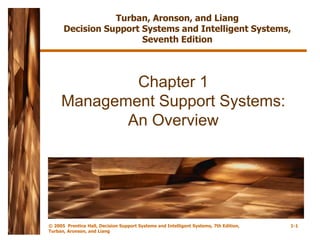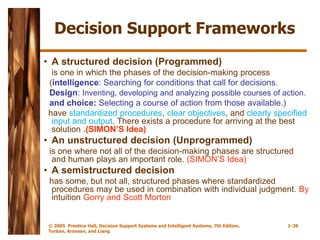The document discusses management support systems and decision support systems. It defines decision support systems as computer-based information systems that combine data and models to solve non-structured problems with extensive user involvement through a friendly user interface. It also outlines Simon's three phases of decision making: intelligence, design, and choice. Additionally, it lists some of the major benefits DSS provide such as quickly performing thorough analysis, exposing users to new insights, and facilitating communication.



































